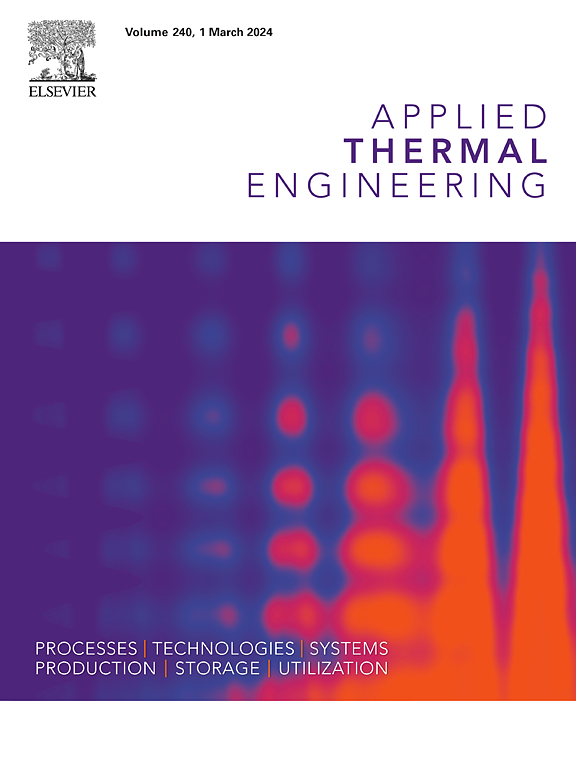Study on waste heat recovery from sludge drying exhaust gas: Comparisons between pressurized heat exchange coupled with steam compression (PHESC) system and heat pump coupled with steam compression (HPSC) system
IF 6.9
2区 工程技术
Q2 ENERGY & FUELS
引用次数: 0
Abstract
This study investigated efficient waste heat recovery from sludge drying exhaust gas by comparatively analyzing two innovative systems: the pressurized heat exchange with steam compression (PHESC) and the closed-loop water heat pump with steam compression (HPSC). Through theoretical modelling and pilot-scale testing, the systems’ thermal performance, energy efficiency, and economic viability were evaluated. Results demonstrate that HPSC exhibits superior stability and recovery capacity, achieving a waste heat recovery rate of 72.8 % and a recovery power of 679.1 kW at optimal conditions, outperforming PHESC’s maximum recovery rate of 67.8 %. Economically, HPSC generates direct benefits of 49.7–72.6 CNY per ton of wet sludge, markedly higher than PHESC’s range (−7.1 to 69.9 CNY/t). While both systems show higher operational energy consumption than theoretical predictions, HPSC proves more adaptable for large-scale industrial applications due to its robust heat transfer mechanism and economic advantages. This work highlights HPSC’s potential as a novel and sustainable solution for simultaneous energy recovery and operational stability in sludge thermal drying, advancing industrial waste heat recovery strategies for high-pollution exhaust streams.
污泥干燥废气余热回收研究:蒸汽压缩加压换热(PHESC)系统与蒸汽压缩热泵(HPSC)系统的比较
本研究通过对比分析两种创新系统:蒸汽压缩加压换热系统(PHESC)和蒸汽压缩闭环水热泵系统(HPSC),探讨污泥干燥废气余热的高效回收。通过理论建模和中试测试,对系统的热性能、能源效率和经济可行性进行了评估。结果表明,HPSC具有良好的稳定性和回收能力,在最佳条件下,其余热回收率为72.8%,回收功率为679.1 kW,超过了PHESC的最大回收率67.8%。在经济上,HPSC每吨湿污泥产生49.7-72.6元的直接效益,明显高于PHESC的范围(- 7.1 - 69.9元/吨)。虽然这两种系统的运行能耗都高于理论预测,但由于其强大的传热机制和经济优势,HPSC证明更适合大规模工业应用。这项工作突出了HPSC作为一种新型和可持续的解决方案的潜力,可以同时回收污泥热干燥的能量和运行稳定性,推进高污染废气流的工业废热回收策略。
本文章由计算机程序翻译,如有差异,请以英文原文为准。
求助全文
约1分钟内获得全文
求助全文
来源期刊

Applied Thermal Engineering
工程技术-工程:机械
CiteScore
11.30
自引率
15.60%
发文量
1474
审稿时长
57 days
期刊介绍:
Applied Thermal Engineering disseminates novel research related to the design, development and demonstration of components, devices, equipment, technologies and systems involving thermal processes for the production, storage, utilization and conservation of energy, with a focus on engineering application.
The journal publishes high-quality and high-impact Original Research Articles, Review Articles, Short Communications and Letters to the Editor on cutting-edge innovations in research, and recent advances or issues of interest to the thermal engineering community.
 求助内容:
求助内容: 应助结果提醒方式:
应助结果提醒方式:


